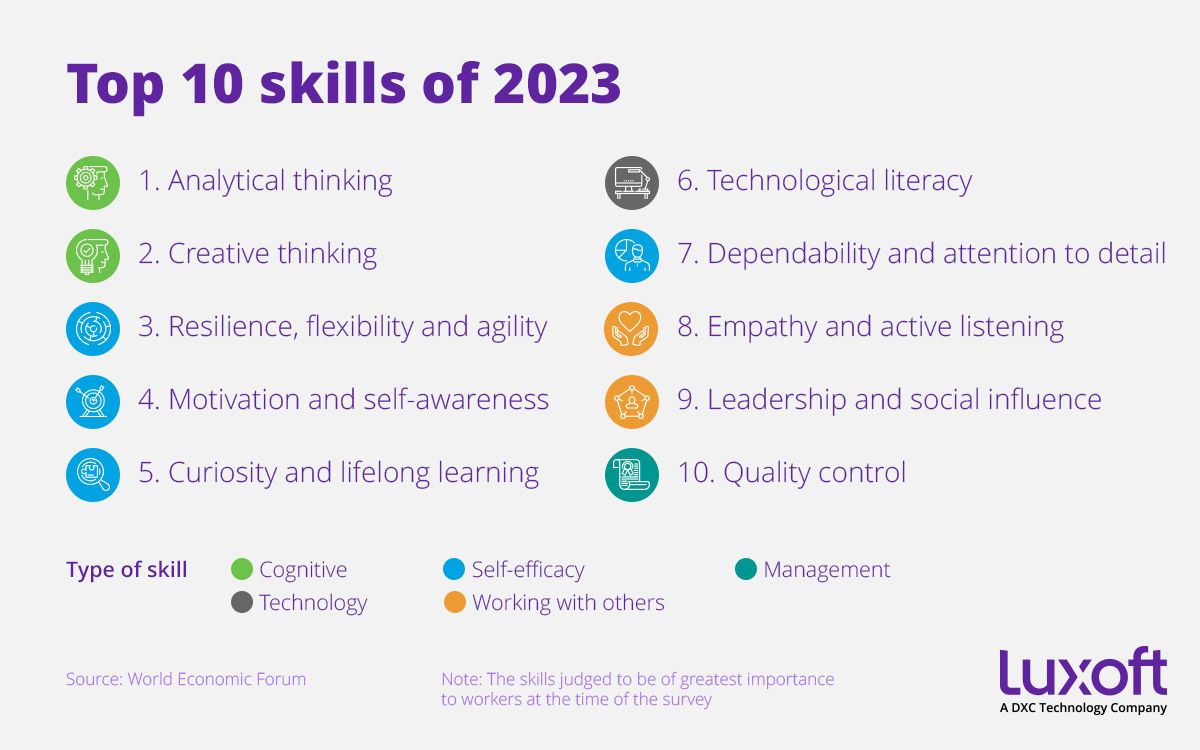
Let's not wait 275 years - how women are succeeding in IT
Men in IT still earn more on average than women. There are efforts underway to eliminate the pay gap, but at the current pace, it will take 275 years to reach parity! Nevertheless, there are lots of talented and motivated women who are overcoming challenges and achieving success. Luxoft Serbia recently held a panel discussion with several women who have built impressive careers in IT. This article is based on that conversation.
Read on to learn the panelists' thoughts on questions like: What are the key factors in successful tech careers for women? Why do inequalities still exist? And what are effective ways to support women?
Panelists included:
- Ana Mijatović, Recruitment Director, Luxoft Serbia
- Yulia Merkureva, Head of Expert Resource Service, Luxoft Serbia
- Sandra Vitas, Project Manager, Luxoft Serbia
- Special guest Dragana Radošević, Project Manager, AFA
Katarina Šonjić, an employer branding strategist of Kat on Coffee and the founder of Empple hosted the discussion.
Global and local statistics
The world is changing, and more and more women are making careers in supposedly "male" professions. Still, inequality remains a real issue. As Dragana Radošević put it: "In Serbia, the share of women in the IT sector is about 23%. The EU average is 19%." In the US, the situation is better: According to LinkedIn, women hold 31% of jobs in STEM and almost 51% in non-STEM fields. According to the National Science Foundation, the numbers are higher with women accounting for 35% of STEM positions. These numbers aren't great and analysts predict that STEM jobs will grow 14.2% by 2060, twice as fast as non-STEM jobs.
Meanwhile, the pay gap is significant. In Serbia, it’s 14.4%, compared with an EU average of 12.7% and a US average of 17%. Only 50% of women in Serbia earn more than 2,000 euros a month. If the pay gap continues to narrow at the current rate, it will take 275 years to solve the problem.
According to the 2023 Global Gender Gap Report, the nine countries with the smallest gaps are Iceland, Norway, Finland, New Zealand, Sweden, Germany, Nicaragua, Namibia, and Lithuania.
There are countries where the situation is getting worse rather than better.
The Middle East and North Africa have the greatest gender inequality, with parity at 62.6%, down 0.9% from a year before. (This means that women in these regions have on average 62.6% of the opportunities and rights that men enjoy.)
Since the pandemic, declines can be seen everywhere with overall parity falling by 0.2% in Canada and by 2.1% in the United States.
Lack of girls in STEM
In Serbia, only one-third of university students in STEM fields are girls. In the US, girls account for 21% of undergraduate computer science students, 22% of engineering students, and 35% of economics students. In the UK, STEM majors were only 31% female in 2023.
Technical specialties continue to be perceived as masculine, and there is a widespread perception that they are difficult for girls. Luxoft’s focused on changing this narrative and showing that there are many successful women who’ve made careers in technical fields.
One way to fight stereotypes is to work with school-age girls. According to Dragana Radošević, AFA organizes "roadshows" at schools — meetings where successful women from IT and engineering companies talk about their careers and share advice. Mentorship programs, competitions, and hackathons also help popularize STEM among girls.
The percentage of female STEM graduates gaining employment is increasing with every cohort, but retention is poor: Even one year after the initial hire, there's a significant drop among women.
According to a WEF report from 2023, "[W]omen currently account for 29.4% of entry-level workers in STEM jobs, but only between 12.4% and 17.8% of high-level leadership roles."
Skills and competencies for success in IT
Professional development is a never-ending process. To stay in demand, you need to keep building your skills, no matter your gender.
The importance of tech skills is growing, not just for people who work in IT. Among the top 10 skills that the WEF identified as most important in 2023, technological literacy was number 6. Among skills that are growing in importance, technological literacy is third, with AI and big data seventh.

Experts at the Luxoft panel discussion emphasized adaptability, flexibility, and communication as important soft skills for an IT career. Employers value motivated candidates who can work on a team and understand cross-cultural differences.
The IT market is dynamic. According to Statista, in 2023, the skills most in demand globally were those related to web development, with JavaScript leading among programming languages, and cybersecurity saw the largest skills shortage.

The labor market: How to get into IT
Ana Mijatović noted that 25-35% of Luxoft applicants are women and 65-75% are men. She said that women are more likely to work in support roles such as HR rather than in technical roles.
Interestingly, 56% of women leave for personal reasons, compared with 44% of men. Women are more likely to leave the company because they want to be more involved with family.
Сompetition in IT is quite high. Ana Mijatović highlighted several factors that increase the chances of getting a junior-level job: Good grades in university, the ability to stand out, and high motivation. Whether or not you have relevant experience, your resume should be informative and mention your strengths. For those seeking middle and senior positions, Ana stresses staying connected to the community and constantly leveling up by following industry trends, mastering new technologies, and getting certifications.
Instead of a conclusion
Slowly but surely, women's efforts to improve their position in IT are paying off. Sandra Vitas points out that just ten years ago leadership positions were mostly held by men, but these days she doesn't feel that that's still the case.
"I know many amazing female project managers, program managers, even directors. So, I think that's no longer the case, especially here at Luxoft. And I think that’s great!"
Luxoft has an excellent mentoring system, with training, internship programs, and small gatherings where employees can share problems and get support from more experienced colleagues. The company's strong community space plays a big role here. Sandra Vitas adds, "I started working at Luxoft as a Scrum master and am now a project manager. The project management community helped me advance my career by helping, guiding, and supporting me. Luxoft has strong communities of interest in every area."
Despite the difficulties women in tech face, it’s important to remember their progress and achievements. A supportive corporate culture, mentoring programs, and open conversations about challenges are important steps toward creating equal opportunities. Visit the Luxoft website to learn more about the opportunities our employees have to grow and strive in the dynamic world of IT.


